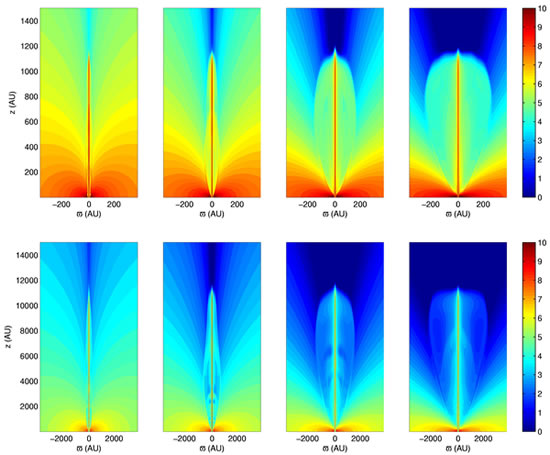Unified Model for Jets and Outflows from Young Stars

The figure shows the density structures at 100 (top) and 1000 (bottom) years with four representative numbers n = 1, 2, 4, 6 (from left to right), which indicates the degree of anisotropy in ambient mass distribution.
We use Zeus2D MHD code to simulate the interaction of a spherical primary wind and toroid-like ambient core material shaped by anisotropic magnetic support. The lobes produced by the interaction resemble many systematics observed in molecular outflows from very young stars, ranging from Class 0 to I sources. In particular, both the dense axial jet and the wide-angle wind participate in the wind-ambient interaction. In our model, the jet- and wind-driven pictures of molecular outflows are unified. (Shang, Li, Allen, Liu, Chou, & Anderson, 2006, ApJ, 649, 845)